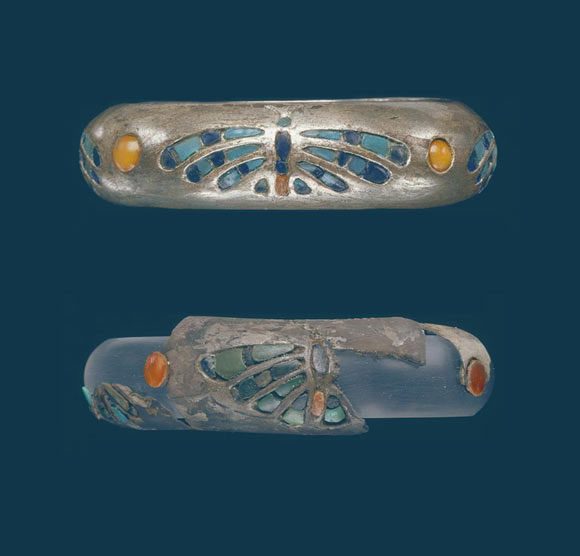The jewelry collection of Queen Hetepheres I has provided us with deeper insights into the lives and culture of queens and the royal family of ancient Egypt. It is a valuable resource for researchers and history enthusiasts alike.
The Tomb of Queen Hetepheres I – consort of the Fourth Dynasty during the Old Kingdom of Egypt – was excavated in 1925 by an expedition from Harvard University and the Museum of Fine Arts (USA). This tomb contains the largest and most renowned collection of silver artifacts, over 4,600 years old, from the early period of Egypt, according to Sci-News.
In a recently published study in the Journal of Archaeological Science: Reports, the collection of silver jewelry inlaid with gold and adorned with precious stones from Queen Hetepheres I has been reanalyzed, revealing another hidden “treasure” within the very materials from which they were made.

Two of the beautiful silver jewelry pieces of Queen Hetepheres I.
Led by Dr. Karin Sowada from Macquarie University (Australia), the research team found that these pieces of jewelry are made from a type of silver that contains trace amounts of gold, copper, lead, silver chloride, copper chloride, and several other minerals.
The isotopic ratios of the minerals within this material correspond only to ore from the Cyclades Islands group (part of the Aegean Sea – Egypt). Less likely, it could originate from the village of Lavrion (Attica – Egypt).
However, regardless of the origin, it is Greek silver rather than the Egyptian gold-silver alloy as suspected by earlier documents.
Thus, the jewelry collection of this famed queen has inadvertently revealed an unknown trade network, with merchant ships that were previously unrecognized and the earliest connections between Egypt and Greece.
Moreover, the jewelry pieces also showcase remarkable craftsmanship when examined under an electron microscope. For example, the techniques used render the bracelets and rings highly resistant to breakage – they have remarkably remained intact after 4,600 years.
It is also possible that gold was added during the alloying process to enhance beauty and malleability.
The bracelet and ring collection of Hetepheres I was found in a wooden box covered with gold leaf, consisting of 20 exquisitely crafted pieces, inlaid with lapis lazuli, turquoise, stones, and colored gypsum.
According to the research team, these findings have increased the rarity of these artifacts threefold.
|
Queen Hetepheres I was the wife of Pharaoh Sneferu and the mother of Pharaoh Khufu, both prominent figures of the Old Kingdom (2686 to 2181 BC) in Egypt. Pharaoh Khufu is known for constructing the Great Pyramid of Giza, the only surviving wonder of the ancient world to this day. |





















































